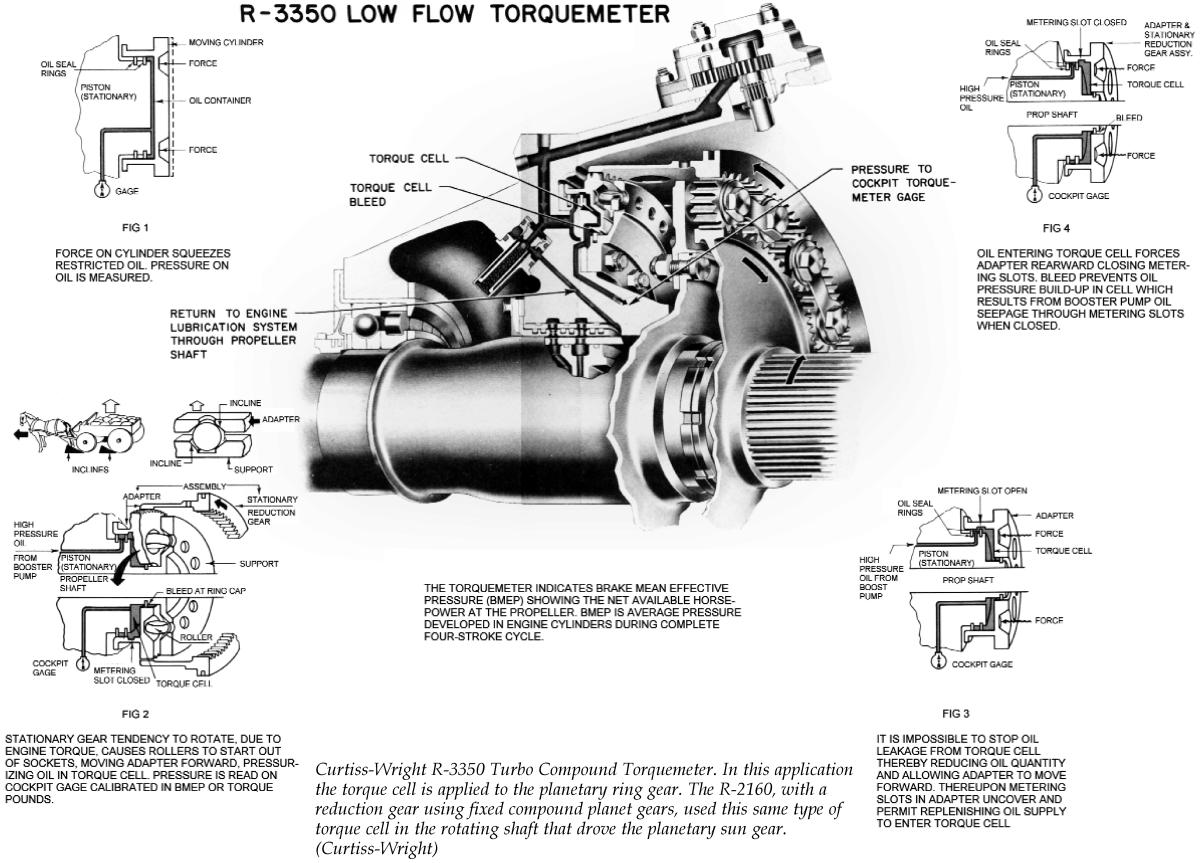When the use of planetary propeller reduction gears became more widespread in the early 1930s, it did not take long for someone to realize that with all those equal and opposite reactions going on inside the nose case, some might lend
themselves to measuring torque. With this knowledge and a little math a pilot could tell exactly how much power was being delivered to the propeller in real time:


